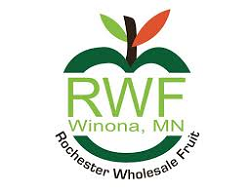1969 was quite a year. The country was ablaze with protests, the Vietnam War was on everyone’s mind, college campuses reflected this and so much more.
Meanwhile, yours truly was watching it all through 10 year-old eyes, and it would be another six years before starting an after-school produce career that would last over five decades.
One 1969 hit tune by Rare Earth was “Get Ready.” You may remember some of the lyrics: Get ready (get ready) / Oh don’t you know I’m comin’? (Get ready, ’cause here I come) / On my way, yeah (Get ready, ’cause here I come) / Mm-hm-hm.
That ditty played over and over in my head as a night produce clerk, anticipating the daily produce load at my store. And yes, if you weren’t ready — and I mean really ready — for that full semi of fresh produce, you’d be in trouble. It took a lot of prep, as we used to say.
Among the steps to get ready for the produce load includes:
- Ready all equipment. Make sure the electric jack is charged up, the dock plate available and in working order, and any other supplies are at the ready such as brooms, mops, etc. You don’t want to be caught unprepared with dead batteries, missing or inoperative supplies.
- Clear the backroom of all debris. This means after getting the display tables rotated and stocked, with the night receiving clerk disposing of all clutter: empty boxes, park away any errant stocking carts (and U-boats; I still see these a lot). Obstacles will slow you down, so take care of these ahead of time.
- Consolidating any remaining product, which means if there are seven cases of oranges on a pallet, you stack these (and similar low palletized items) off and neatly stack all emptied pallets for added room and so they can be returned to the warehouse or DC.
- Sweep the receiving area clean. Make sure a receiving area is swept clear of all dirt, pallet load straps, broken pallets, plastic, etc. It is much safer and easier to maneuver on swept floors, so cleaning is a huge get-ready move.
- Once the produce load arrives, stage full pallets where these would normally go, such as lettuce in the cooler and bananas or tomatoes in the warmer ambient storage area. Then stage the inbound mixed-loaded pallets so you can break each one down and put away efficiently so the cold chain remains unbroken.
- When every pallet is broken down and every item is rotated, take the extra effort to handle product carefully to avoid damage, ensure each carton’s contents are visible for easy ordering and selection reference. Follow the produce manager’s direction where each item should ideally be stored. Neatness goes a long way for “the next guy” to find everything without having to waste time looking for needed items.
- Once the load is safely broken down and put away, it’s a good idea to code date the cooler by using a magic marker to write the receiving date on inbound cartons. This makes it easy for everyone to follow the FIFO (first in, first out) method of rotation and produce stocking.
- Ensure that you received what was ordered. Check off the load against the invoice for accuracy. Take care to ensure that the invoiced quantities and pack sizes match what was actually received.
- Note any shortages or discrepancies so that prompt credit can be applied. A lot of shrink can be traced to this step, so part of readiness is to check off the load while everything is still fresh in your mind.
- Sweep and clean the receiving area after putting the load away. When everything is neat and clean, as well as easily visible and accessible, a produce operation runs much smoother in every way.
Keeping things organized starts with a methodical receiving system, but only if the receiving clerks are trained and prepared.
So, yeah. Get ready.
Armand Lobato’s more than 50 years of experience in the produce business span a range of foodservice and retail positions. He is retired from the Idaho Potato Commission and has written a weekly retail column for nearly two decades.














